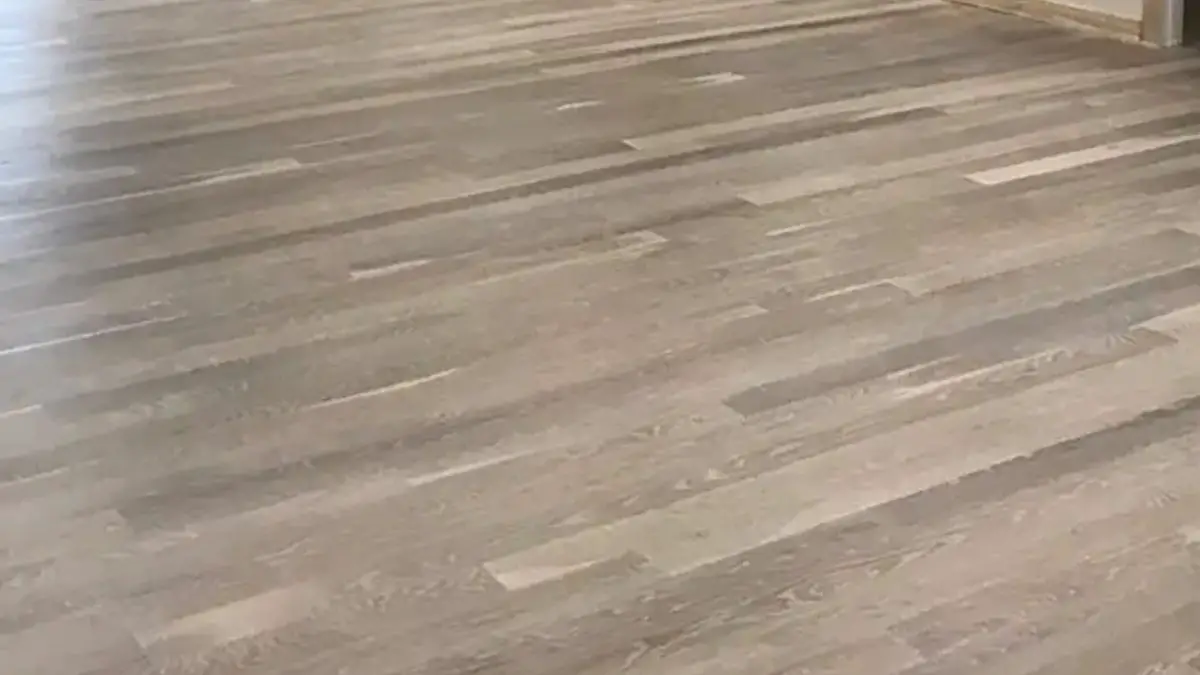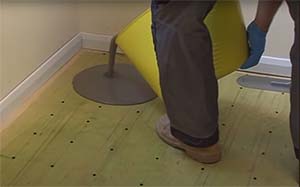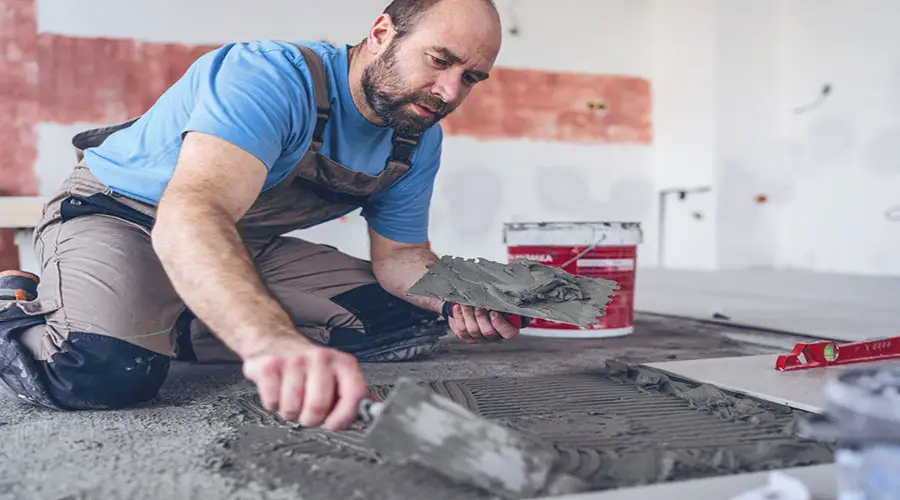
A new flooring project can be tedious. So, when you’re on the hunt for something beautiful and affordable, sometimes it can be challenging to determine what type of underlayment best suits your needs. Does tiling on concrete need an underlayment? Let’s find out!
Tiling on concrete does not always need an underlayment, but it is a good idea for extra strength and stability on uneven or rough substrates. Cracks may form on tile because of uneven concrete and changes in temperature or humidity. An underlayment helps mitigate and control these cracks from spreading across your entire floor.
An underlay on concrete can consist of:
- a liquid self-leveling compound
- 4×8 sheet cement backer board
- uncoupling membrane underlayment
- peel-and-stick membrane underlayment
Below are all the questions that homeowners ask, plus the answers I have gathered from experts in the construction industry.
Do You Need Underlayment for a Tile Floor?
Although underlayment is not required, you do need to prepare the surface before placing your tiles. If you want the strongest, most resilient tile installation possible, one of your first steps should be to prepare everything before laying down any tiles.
For example, if there are cracks or uneven areas in the concrete below, it’s essential to seal them with underlayment. And then proceed to prepare a leveled surface for setting some beautiful new flooring.
When you are tiling, the ground underneath your tiles needs to be well prepared. You achieve this by providing a protective layer of underlayment on top of it. A cement board or backer board is the best for this purpose.
The boards protect against moisture in flooring materials. They also give added stability when installing tile floors with mortar spacers that can make installation easier. You can do this without needing any additional attachments such as nails which may damage the substrate below.
When Should An Underlayment Not Be Used In a Tile Project?
Underlayments should be used in a tile project whenever possible.
Many people believe that tile is the most durable flooring option on the market. For this reason, they often avoid installing an underlayment when laying tiles in their home for fear of cutting down its lifespan prematurely.
Firstly, there are many subfloor materials with varying levels of preparation you need to master and various installation methods. Each requires a slightly different approach to choosing an appropriate type or thickness of underlayments accordingly.
Secondly, if you have prepared your subfloor correctly, it will be clean and level. This means less prep work before tiling adhesive. This means that there are fewer opportunities for sealing issues due to natural fluctuations in moisture content over time.
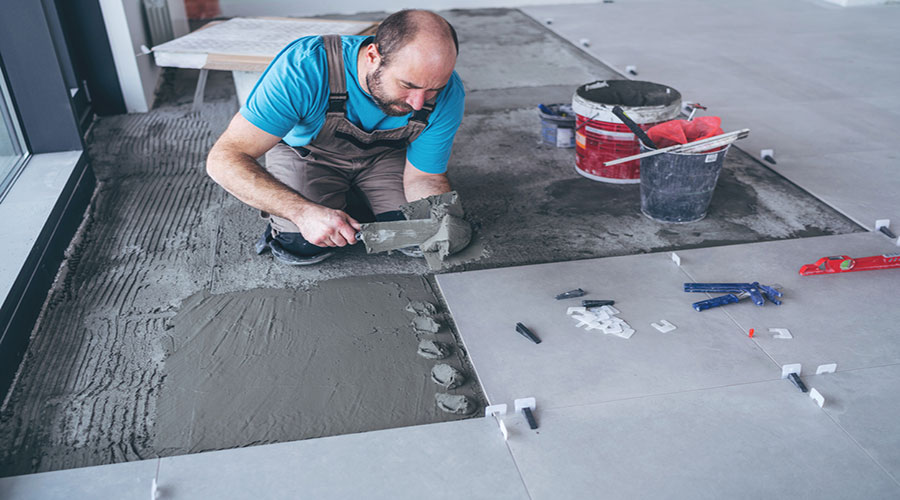
What Underlayment Types Should You Use for Tile Installation?
There are many different types of underlayment available, and they’re also available in various forms. Underlayments can be used for any flooring to make installation more manageable.
Still, you’ll need to figure out which one will work best with your specific situation before investing. Here are the four main types of underlayment you can choose from:
1. Sheet Underlayment
Is there a lot of movement or unevenness in your house? If yes, you need a rigid sheet cement backer board. Sheets are an innovative new product on the market mainly consisting of cement-based materials that act as an underlayment.
Contractors apply backer board sheets on wood subfloors, and they help with deflection. However, they also work for slabs too. This makes for rigid floors suitable for tile installation.
2. Uncoupling Membrane Underlayment
These underlayments allow the tile and substrate to move independently of each other. And so movement in the substrate doesn’t cause cracking on top. This membrane provides for greater flexibility than traditional techniques, which would leave a crack.
Without it, if you subject the floor to similar forces as experienced during earthquakes or when tire treads drive across it, cracks appear.
3. Liquid Applied Membrane Underlayment
A self-leveling compound is a liquid overlay that when spread fills in low spots in concrete to form a level surface to lay tile.
Contractors also apply heavy-duty mortar to cracks and seams in concrete with a trowel or roller for crack prevention. It will take at least 4-6 hours before you can walk on it, but 12+ hours before installing tile over top of the product.
This DIY project might be less expensive than peel and stick membrane if time isn’t an issue.
4. Peel and Stick Membrane Underlayment
You can prevent cracks with this product by applying a tile right on top of it. However, you must use a primer, preferably the manufacturer’s primer.
The primer is essential to ensure the base is without cracks. You get a lifetime warranty against cracks if applied correctly.
Can You Place Tile Directly On Concrete?
You can install tiles on concrete as long as you take precautions. House contract and expansion can cause the flooring to shift or crack, which ruins your new tile installation. But if you have a firm base, then this won’t be an issue.
Ceramic tiles are rigid, so they don’t shift or bend. The grout contractors use to seal the cracks between the tile is also hard and inflexible. And this makes concrete an excellent choice for flooring because it won’t crack under pressure from shifting foundations.
However, cement can withstand shifts like those by groundwater underneath your home’s foundation. But it will probably break up at some time.
So if you want to fix ceramic tiles on top of a cracked concrete slab without worrying about them eventually breaking apart, too, then consider using an epoxy resin sealer over any damaged areas.
It would help if you did this before laying down new tile and installing rubberized mortar joints throughout the room.
How to Prepare a Concrete Floor for Tile Installation
Here are all the steps you need to go through to prepare a concrete floor before tiling:
1. Gather All the Equipment and Tools You Need
Before the work begins, be sure to have everything on hand. Be ready with:
- Broom
- Concrete sealer
- Dustpan
- A 5-gallon bucket (to mix concrete and fill any holes)
- Concrete fixing compound
- Trowel
- Scrub brush
- Roller with a longer handle
- Cloths or towels
2. Sweep the Floor
Start by sweeping the floor with a broom and collecting waste with a dustpan. Remove any dirt or debris as you sweep to make your work area nice and clean.
3. Scrub the Floor Thoroughly
Next, proceed to get that stubborn dirt and those persistent stains out with a good hard scrubbing from your mop or broom handle. Be sure to also dry the floor using any cloth.
4. Rinse the Floor With Clean Water
After you’ve washed the floor, rinse it with warm water. Before proceeding on to the subsequent phases of this project, make sure your floors are completely dry.
When drying out a freshly cleaned and rinsed floor in a high-humidity location, experts recommend that you use a box fan. This has the potential to improve efficiency dramatically.
5. Fill In All the Cracks On the Floor
Damaged tiles are often the result of poor concrete patching. As you clean your floor, make sure to fill all cracks and smooth out any bumps on the surface before proceeding with tiling or resurfacing for a better-looking finish.
When you’re patching a floor, installing an additional moisture barrier is ideal. A moisture barrier is necessary for homes with high levels of humidity or water leaks that could otherwise damage your newly installed tiles.
It’s essential to protect the area where you are working and ensure there aren’t any hidden dangers.
6. Level All Recessed and Raised Areas
If the floor has damages, you will have to fix them first. Use an adhesive and sealant compound appropriate for your surface material if there are small cracks in tile or grout lines.
If there are more severe damages such as huge holes, shattered tiles, or loose concrete, make sure the area where the cracks are is dry before moving on to patching them. This is to ensure a swift fix without causing more damage or problems to other portions of the home’s foundation.
7. Spread a Sealant On the Clean Floor
Now that you have finished cleaning, patching, and repairing the concrete floor, it’s time to seal it. Sealers create a protective layer on bases that prevents moisture from entering your concrete into the tile below.
Most people use rollers with extended handles for this task. And be sure to get every inch of your surface with this sealant.
Common Questions About Installing Tile On Top of Concrete
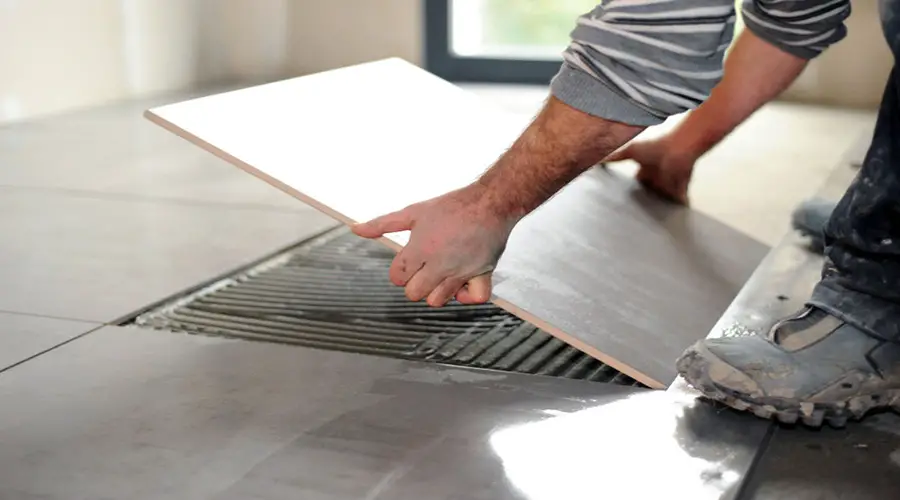
Below are many questions that people have about installing tile on top of concrete. Let’s get right into it!
Do You Need to Waterproof Concrete Floor Before Tiling?
Waterproofing is necessary before tiling and can be effectively done using a sealant. When you seal your concrete, you create a barrier that repels water and permits the trapped vapors to escape. This also removes stains from mildew or mold. You can use concrete sealers to waterproof your surface, so it lasts longer.
Sealers usually come in two types: penetrating sealers and film-forming. Unlike the former, you mainly use a film-forming sealer for coating your flooring with an epoxy or acrylic type substance. This kind will protect the floor from any dirt and spills you may have in your home.
One thing to note about this kind of product, though, is its wear time. This is because it only lasts so long before wearing off. Some people may apply more than one coat to get their desired effect.
The penetrating sealer is a more expensive option for concrete, but it lasts longer and protects the look of your finish. It works great when you apply this to surfaces you have finished indoors, such as bathrooms or kitchens. There’s no need to reapply every 3-5 years, like with most other types of sealers on the market today.
What Are The Most Common Problems With Underlayment?
The biggest issue that most builders face when using underlayments is using the wrong product for the job!
You want to make sure that you are using the right product for the job. For example, a crack membrane meant for lateral or horizontal cracks in a concrete subfloor. This product will not protect your tile installation from cracking generated by up and down movement on flexing wood floorboards.
To solve this problem, install an underlayment first and then finish with another type of sealant before applying ceramic tiles overtop.
Do You Need a Backer Board for Floor Tile On Concrete?
If you want a beautiful finish, you need to install a backer board for tiling. If you’re installing tile on a concrete slab, it might seem redundant also to lay down cement board. However, the latter can help protect against moisture and provide an additional insulation layer underneath your flooring.
What Is The Best Backer Board For Tiling On Concrete?
A cement board is a reliable backer for both floors and walls. But know that most tile setters fail on the side of care when it comes to cement boards.
Brushing waterproofing membranes over them while they are still wet before laying down tiles is a no! And this is especially for those around showers or tub floors and walls.
What Type Of Thin-Set Do You Use For Tile On Concrete?
One of the best ways to ensure your tiles stay firmly in place is by using modified thin-set mortar. This type of adhesive will form a strong bond with minimal shrinkage, which means there’s less chance for cracks forming, and it’ll keep your flooring looking great!
Most experts recommend this product due to its efficacy in most tile installations.
So be sure you use it if you want peace of mind that comes from knowing nothing can come between you and success.
What Do You Use For Patching a Concrete Floor?
You can repair cracked, chipped pavement with mortar. You use a mixture of aggregate cement and synthetic adhesives to bond the surface together again.
This may happen by using a thin layer of thin-set mortar on top that allows it to heal over time as water seeps in between the cracks.
Do You Need To Prime Concrete Before Tiling?
You must add primer before tiling on most surfaces. Primers can increase bonding and prevent issues with porous or non-porous materials, such as wood and concrete plasterboard.
This will not only make the job of laying tile much easier but also prolong its life span. It does this by preventing water damage, leading to cracks in drywall from pooling water on top of tiles.
What Is The Best Primer For Concrete Floors?
Epoxy primer is a unique type of paint that can seep into the concrete. This means it will stick to the surface much better than other paints, making them ideal for industrial and commercial buildings where durability needs are high.
Can You Use Underlayment On Plywood?
If you’re installing tile on a plywood subfloor, be sure to use either an underlayment membrane or cement backer board as your base. The thin-set adhesive will form a weak bond if you apply it directly onto the wood.
Should You Apply a Barrier Between the Concrete And Tiles Before Tiling?
There should be a barrier between concrete and tiles. When you’re ready to install your tile floor in an area with concrete, the two surfaces must be adequately separated. This is because any movement of one surface against another can cause cracking and moisture issues for the tiles you place directly on a drywall or cement slab.
One solution is installing an uncoupling membrane between the floors. This flexible polyethylene layer will protect both surfaces from accidents by preventing contact.
Conclusion
Many advantages come with installing an underlayment. And there is no reason why you should not, even though it is not always a must. Some benefits are durability, a clean job, and the mitigation of breaking and cracking tiles.
To get the best results for your house when tiling to prevent problems, you must conduct proper research beforehand. This helps you discover which product will work best for your situation. Research is also vital as you get to understand the material and how to use it best.
In conclusion, putting a good foundation in place does much more than just preventing issues. It also saves you time on future projects due to having less waste during installation because of how easy this process can be. So with that, you ought to install underlayment, any of the four, before tiling.
Sources
- CONCRETE FLOOR PROS, CONS & DESIGN IDEAS
- Primer: The Go-Between for Paint and Concrete
- Is Underlayment Necessary for Tile on Concrete?
- Why Underlayment Matters to a Tile Installation Project




